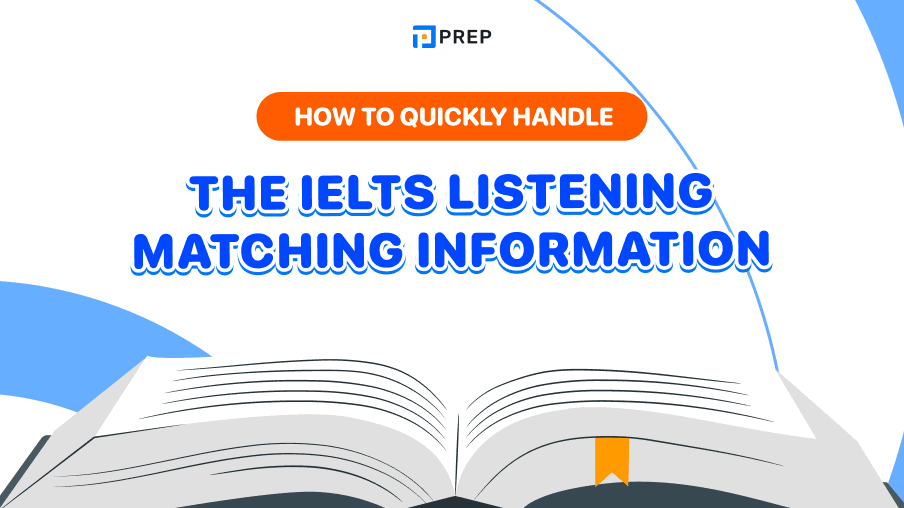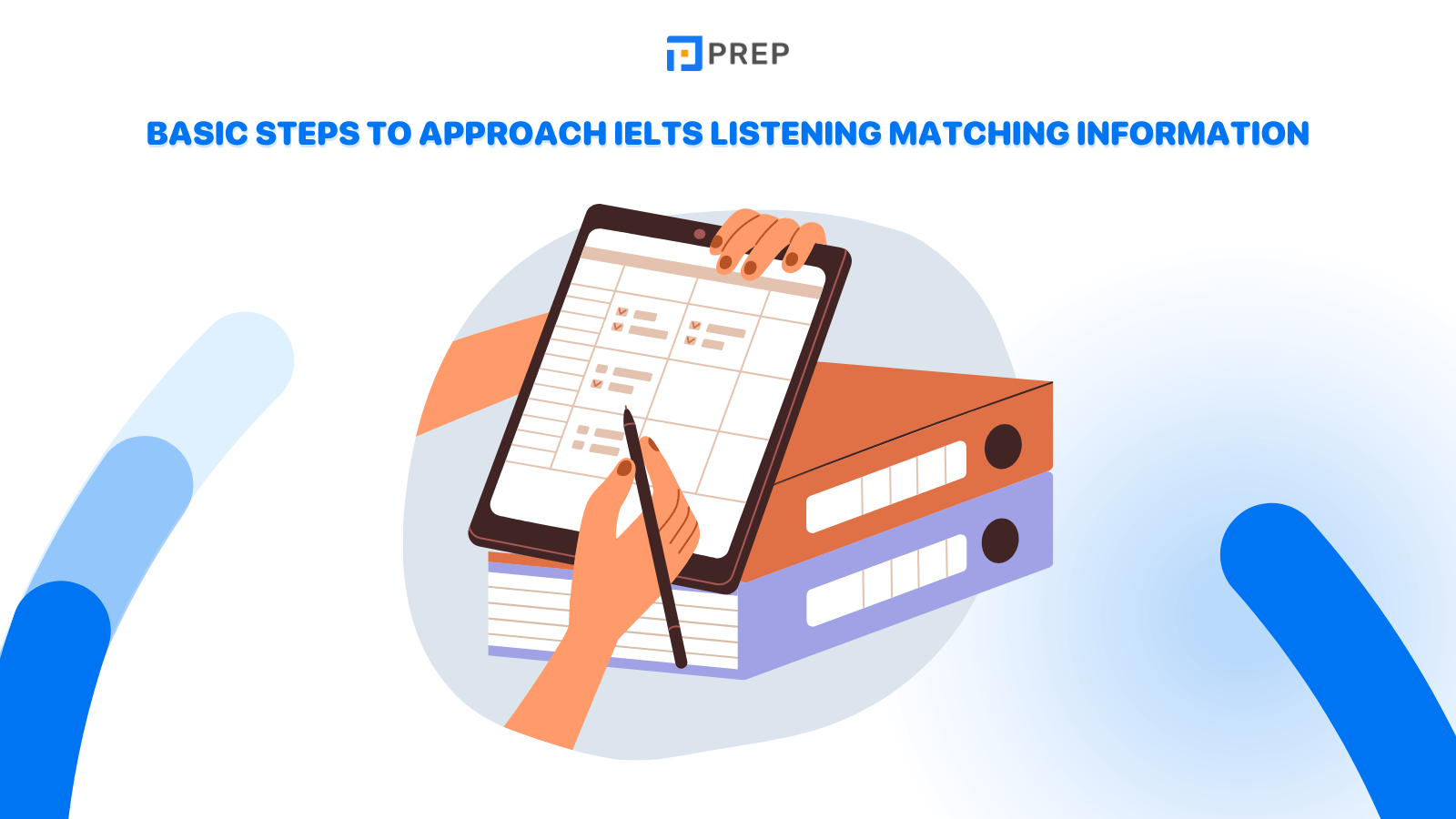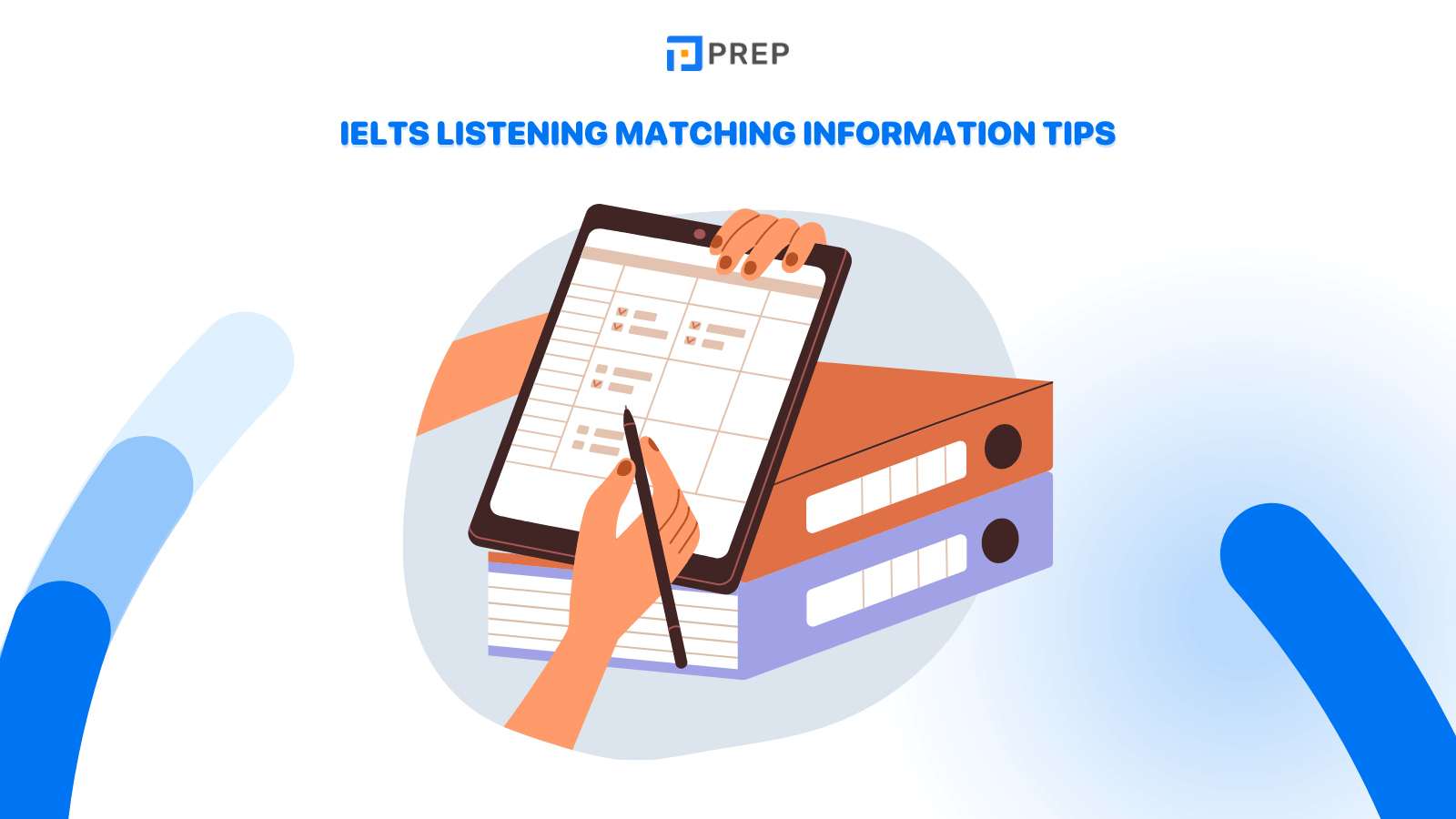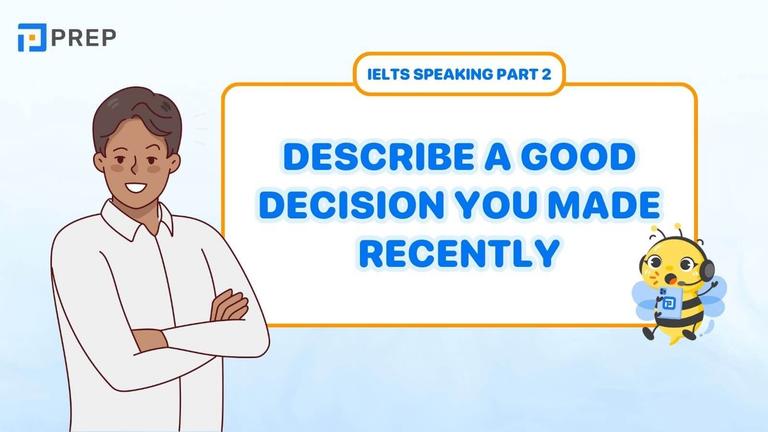How to Do IELTS Listening Matching Information?
Matching Information is a common question type in the IELTS Listening test. It requires you to listen carefully, compare details, and match content accurately. In this guide, you’ll discover key strategies, essential listening skills, and practice tips to boost your score.

I. What Is Matching Information in IELTS Listening?
Matching Information is a common question type in the IELTS Listening test, where your task is to match specific pieces of information from a list of options to the correct prompts based on what you hear in the audio. This may involve matching names to opinions, events to dates, or descriptions to people.
This type of question is based on information mapping — the ability to:
-
Listen carefully to what is said
-
Compare it with the information or categories given in the question
-
Identify paraphrased details
-
Accurately pair them together
The information is often not given in the same order, which means you must process details in real time and recognize reworded content.
Matching tasks can appear in:
-
Part 1 or 2: Matching descriptions to places or services
-
Part 3 or 4: Matching speakers to opinions, statements, or attitudes
It often requires more active listening in Part 3–4 due to more abstract content and a faster speaking pace.
Matching tasks assess a combination of difficult skills at once. This makes it both common and tricky — especially for learners aiming for IELTS Band 6.5+. For a focused guide on identifying keywords effectively, see finding keywords in IELTS listening.
Types of Matching Tasks in IELTS Listening
To avoid confusion, you should know that IELTS Listening includes several types of matching tasks. Here is a comparison of three similar formats:
|
Matching Type |
Question Focus |
Answer Options |
|
Matching Information |
Match details (opinions, points, facts) |
Usually labeled A, B, C... |
|
Matching Features |
Match objects/people with related characteristics |
Often numbers or letters (e.g. I, II, III) |
|
Matching Headings (Reading) |
Match headings to sections of text (in Reading) |
Heading list (i.e. main idea summaries) |
Note: Only the first two types appear in Listening. Matching Headings is exclusive to the Reading section.
By understanding how this question type works, you can develop a clear strategy to tackle it. In the next section, we’ll look at the key skills you need to improve your accuracy and confidence when facing matching tasks.
For a full overview of question types in the Listening test, see IELTS listening question types.
II. Key Skills Needed for Matching Information
Successfully answering Matching Information questions in the IELTS Listening test requires more than just understanding what you hear. This task combines several listening sub-skills that work together in real time, such as recognizing paraphrasing, distinguishing similar ideas, and applying logical elimination.

Predicting Information Before You Listen
-
Look at the list of items to match (e.g. descriptions, names, or features).
-
Try to guess the topic, the type of language expected (verbs, nouns, adjectives...), and possible synonyms.
-
This helps you stay focused during the actual listening.
Example: If the heading says “services,” expect vocabulary related to actions: booking, delivery, consultation.
For structured prediction drills, see predicting IELTS listening answers.
Scanning and Recognizing Keywords
-
Learn to quickly scan both columns (statements and options) to identify key terms.
-
Underline verbs, adjectives, numbers, or names — anything that might be rephrased in the audio.
-
These keywords act like psychological “anchors” during listening.
Tip: Related terms are rarely repeated exactly. Focus on meaning, not just the exact words.
Understanding Paraphrasing in Listening
-
IELTS Listening rarely uses the same words as those printed in the questions.
-
You must be able to recognize synonyms, similar expressions, and restructured grammar.
Example:
Printed: “He’s worried about the cost”
Audio: “He’s concerned it might be too expensive”
Listening for Specific Detail, Not the General Idea
-
You will hear several pieces of information close together, but only one is correct.
-
Pay attention to specific references: quantities, comparisons, opinions, time, speaker focus...
Strategy: If you hear all options mentioned, take note — but choose the one that logically fits the question.
Using Logical Elimination while Listening
-
Some answers will be tempting but incorrect — known as distractors.
-
Eliminate options that conflict with the recording or are mentioned as possibilities that were rejected.
-
Always match ideas logically, not based on assumptions.
Strong skills in keyword prediction, paraphrase recognition, and real-time logic are essential for succeeding in this tricky question type — especially in Sections 2 and 3 of the test.
III. How to Do Matching Information in IELTS Listening
Matching Information questions in the IELTS Listening test can be challenging because the information in the audio is often paraphrased and not presented in order. However, with a clear step-by-step strategy and consistent practice, you can approach this question type with greater accuracy and confidence.
Here is a practical process you can follow:
Step 1: Read the Heading Line Carefully
-
Identify the purpose of the matching task: What are you matching to what?
-
For example: Match speakers to opinions, places to features, or services to descriptions.
This sets the context and helps you predict what kind of information to focus on.
Step 2: Underline Keywords and Predict Meaning
-
Highlight key words in the statements or descriptions (e.g. strong adjectives, verbs, or specific nouns).
-
Predict possible paraphrases or similar phrases that may be used in the recording.
Example: “wants to avoid extra charges” → might be heard as “prefers to stay within the budget.”
Step 3: Read the Options List and Group Similar Ideas
-
Quickly scan through the choices (A–G, for instance).
-
Group similar ideas together to better compare during the listening.
-
Mark any options that might be easy to confuse with one another.
This mental grouping helps with real-time elimination when listening.
Step 4: While Listening – Match in Real Time
-
Listen for meaning, not just exact keywords — IELTS often uses paraphrased wording.
-
As soon as a detail matches logically, note your answer (you can always revise).
-
Pay attention to intonation, pace, and dialogue context to identify speakers or topics more confidently.
Some important details are only mentioned briefly — stay alert and don’t wait for perfect phrases. For additional real-dialogue listening practice, see English listening practice.
Step 5: Use Logic to Eliminate Wrong Options
-
Hear multiple answer choices? Don’t guess too quickly — use logic to eliminate options that conflict with what was said.
-
There is usually only one fully correct match — the rest are distractors designed to test precision.
Don’t match based on “similar sounding words” — always match based on meaning.
Tips to Improve Accuracy
-
Scan all questions before the recording starts. Don’t waste setup time.
-
Never leave a question unanswered. Use logic to make your best guess.
-
Focus on paraphrasing. Study synonym patterns often used in IELTS.
-
Watch out for distractors. Speakers might mention options but reject them.
-
Use the breaks wisely. Preview all questions to build focus and predict content.
By combining smart pre-listening preparation with active, focused listening and logical reasoning, you can significantly increase your accuracy and confidence when dealing with Matching Information tasks in the IELTS Listening test.

To train meaning-based listening using natural speech, explore learning English listening through podcasts.
IV. Achieve Your Dream IELTS Band Score
Listening is one of the easiest skills in the IELTS exam. In order to achieve a high overall score, the band score for Listening must also be correspondingly high. Therefore, to master the Listening skill, candidates need to practice regularly. So, which reputable source provides practice materials to help you quickly improve your score and enhance your knowledge?
Test Practice on prepedu.com is the space that helps you practice IELTS Listening tests online. Here, the Listening practice tests are compiled from reputable sources such as Cambridge, Road to IELTS, and more. What's even better is that candidates can practice the tests COMPLETELY FREE on Test Practice on prepedu.com.
Hopefully, the shared article about the 5 steps to handle IELTS Listening Matching Information above will be useful for candidates who are currently preparing for the IELTS exam. If you worried about Listening, our comprehensive courses will help you ace both—check them out here:
-
IELTS training online: Master IELTS With Us!

Hi I'm Chloe, and I am currently serving as an Product Content Administrator at Prep Education. With over five years of experience in independent online IELTS study and exam preparation, I am confident in my ability to support learners in achieving their highest possible scores.
Comment
Premium content
View allPersonalized roadmap
Most read












